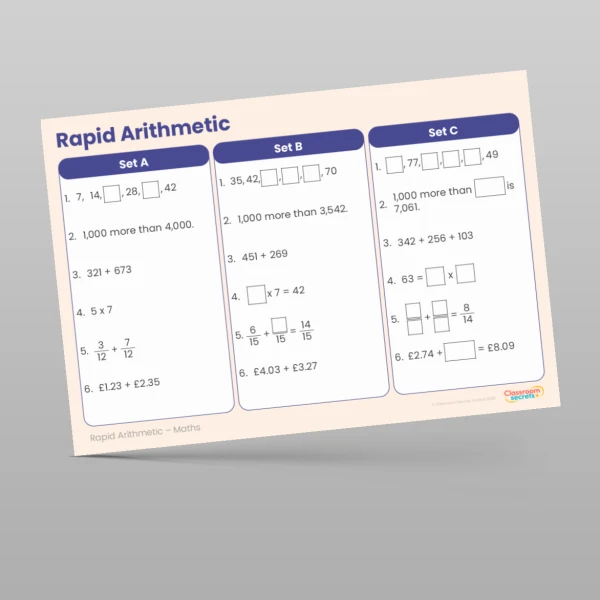

Revisit and revise previously taught objectives to embed learning with this Year 4 Rapid Arithmetic resource. There are three sets of questions which have been differentiated into three levels of challenge to cater to the needs of a range of learners and ensure engagement throughout your class. This activity is perfect to use during registration, at the start of a maths lesson or whenever you have some time to spare. To save on printing costs, we've specially designed this resource to be displayed on the interactive whiteboard. Download now!
Curriculum Objectives
- Write and calculate mathematical statements for multiplication and division using the multiplication tables that they know, including for two-digit numbers times one-digit numbers, using mental and progressing to formal written methods
- Solve problems, including missing number problems, involving multiplication and division, including positive integer scaling problems and correspondence problems in which n objects are connected to m objects
- Count up and down in tenths; recognise that tenths arise from dividing an object into 10 equal parts and in dividing one-digit numbers or quantities by 10
- Recognise, find and write fractions of a discrete set of objects: unit fractions and non-unit fractions with small denominators
- Compare and order unit fractions, and fractions with the same denominators
- Add and subtract fractions with the same denominator within one whole [for example, 5/7 + 1/7 = 6/7 ]
- Count in multiples of 6, 7, 9, 25 and 1000
- Order and compare numbers beyond 1,000
- Find 1,000 more or less than a given number
- Recognise the place value of each digit in a four-digit number (thousands, hundreds, tens, and ones)
- Read Roman numerals to 100 (I to C) and know that over time, the numeral system changed to include the concept of zero and place value
- Round any number to the nearest 10, 100 or 1,000
- Count backwards through zero to include negative numbers
- Estimate and use inverse operations to check answers to a calculation
- Solve addition and subtraction two-step problems in contexts, deciding which operations and methods to use and why
- Recall multiplication and division facts for multiplication tables up to 12 × 12
- Use place value, known and derived facts to multiply and divide mentally, including: multiplying by 0 and 1; dividing by 1; multiplying together three numbers
Tags
Spring
3C7
3C8
3F1a
3F1b
3F3
3F4
4N1
4N2a
4N2b
4N3a
4N3b
4N4b
4N5
4C3
4C4
4C6a
4C6b
Rapid Arithmetic











